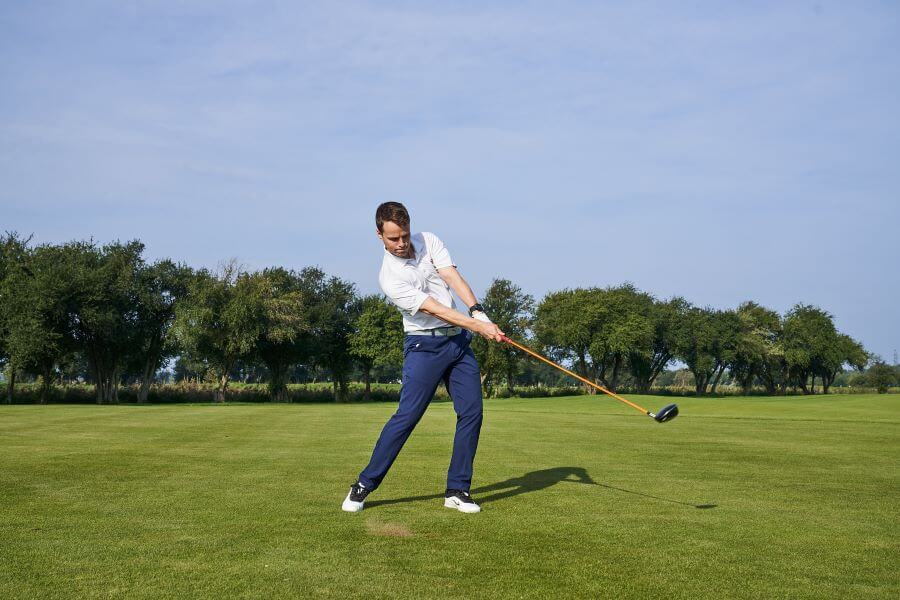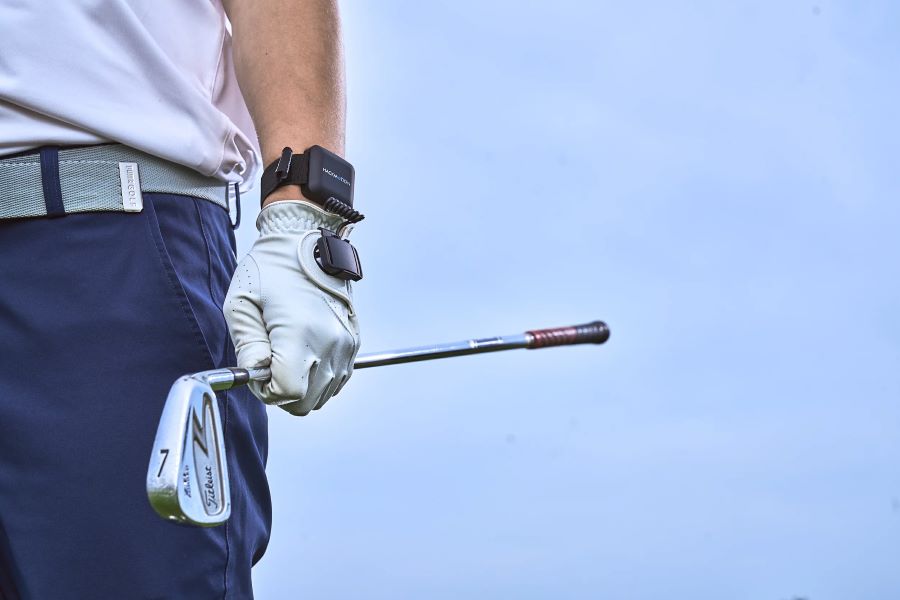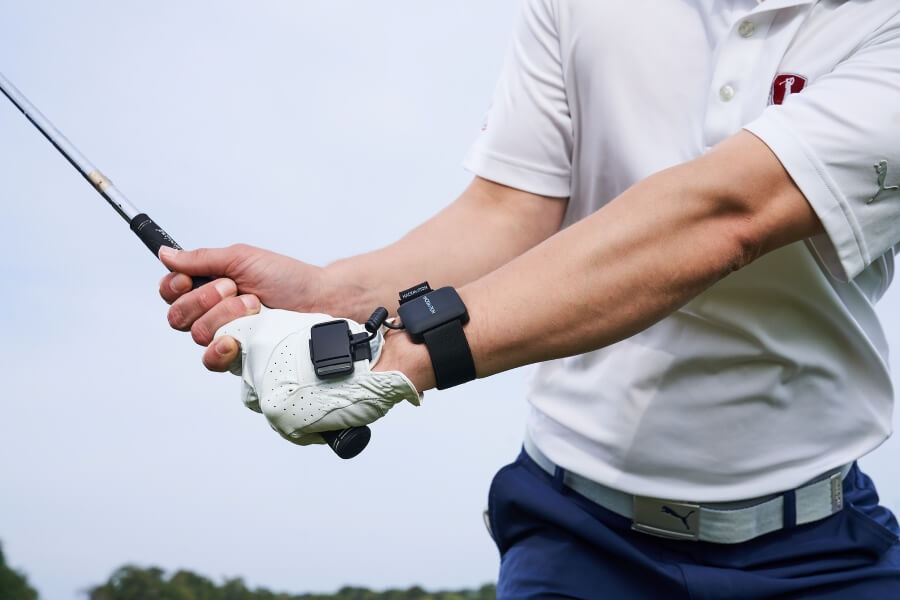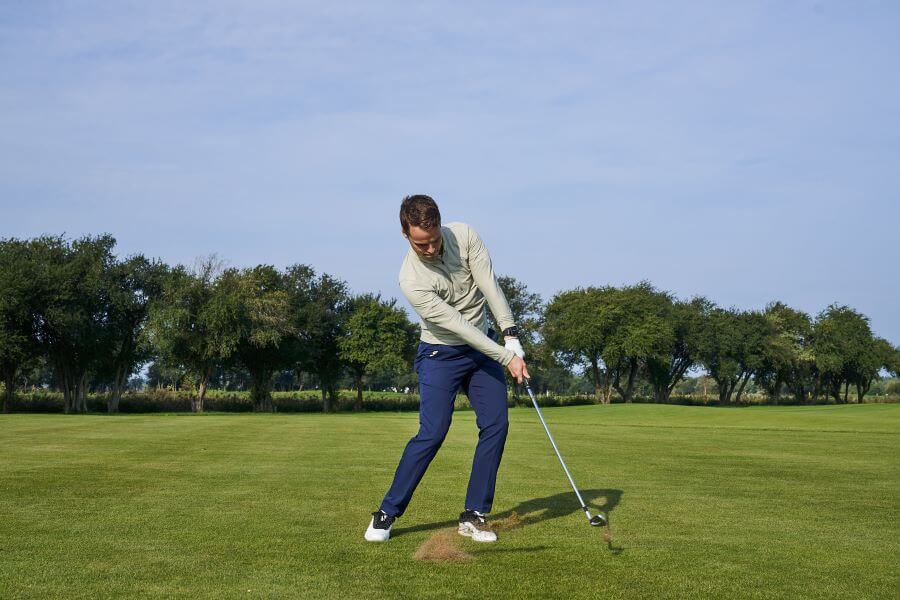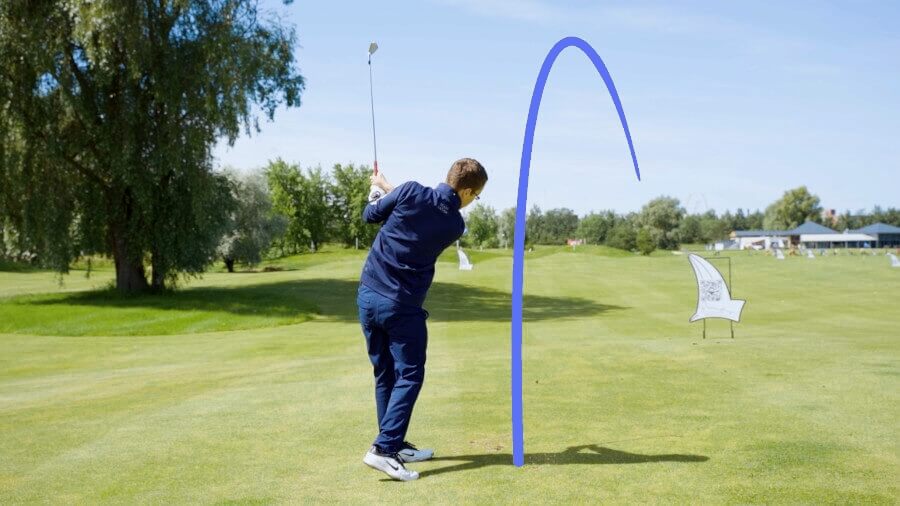Stop Shanking Golf Irons Today – 7 Essential Tips to Cure Your Swing
The shank is the worst shot in golf. It comes out of nowhere, and sometimes the swing you made to hit the shank doesn’t even feel all that bad.
If you shank your golf irons you’ll need a quick plan of action in place to get rid of the shank.
One of the issues with this shot is that it starts to get in your head that you will continue to shank and then the real trouble begins.
I’ll show you how to stop shanking golf irons, why you shank them, and a few of my favorite go-to drills for golfers that shank.
How to Stop Shanking The Golf Ball (Key Takeaways)
If you don’t have time to work through all of these fixes, here are a few of the most important takeaways for fixing your shank shots.
- Pay close attention to the amount of extension you have in your lead wrist throughout the golf swing, if you add too much it will leave your clubface wide open and increase the chance of striking the ball near the hosel.
- Keep movement to a minimum; an overactive body may cause you to hit a shank.
- The tricky part of a shank shot is that you can swing too far from the inside and too far from the outside and it still causes a shank. Work on getting the club to come from the inside and then work left after the ball.
Contents
Why do I Shank My Irons?
Shanking is when the hosel of the golf club makes contact with the golf ball. Instead of hitting the ball off the center of the face, you actually make contact with the hosel.
The most common reasons for hitting a shank include:
- Standing too close to the golf ball: this typically makes a swing too upright.
- Failing to shift weight: weight stays back, you get unstable, and the clubface doesn’t return to the correct position.
- Hands are too active: excessive wrist action, especially in the form of extension, can lead the clubface open at impact.
- Outside in swing path with open face: when the swing path comes from outside the line of the ball towards the hosel.
It’s good to understand why you shank the ball, but the most important thing here is the fix.
7 Effective Ways to Stop Shanking Your Irons
These are the best ways to stop shanking your irons. I know it’s frustrating when this happens on the golf course, and sometimes you can’t immediately fix it.
If you run into real trouble in the middle of a round, just know that switching to short irons and focusing on less movement and solid contact can be enough to get you through a round.
When that round is done, these are the solutions you need.
1. Practice Short Chip Shots
This fix for a shank sounds much too simple, but it’s not.
The key here is that you are no longer making solid contact with the face of your club, and you need to see why that is happening.
Taking the swing down to a much shorter chip shot type swing could give you the information you need and naturally fix the shank.
Try to hit 10 or 15 little short chips where you strike the ball, and then a little turf, and the ball is hit squarely off the face.
Now move back into the full swing and see if you feel better about making contact with the irons.
2. Measure Your Wrist Extension Throughout The Swing
If your lead wrist gets too extended in your swing you will leave yourself open to a shank shot.
The best way to manage this is to learn to control extension in the lead wrist throughout the entire swing.
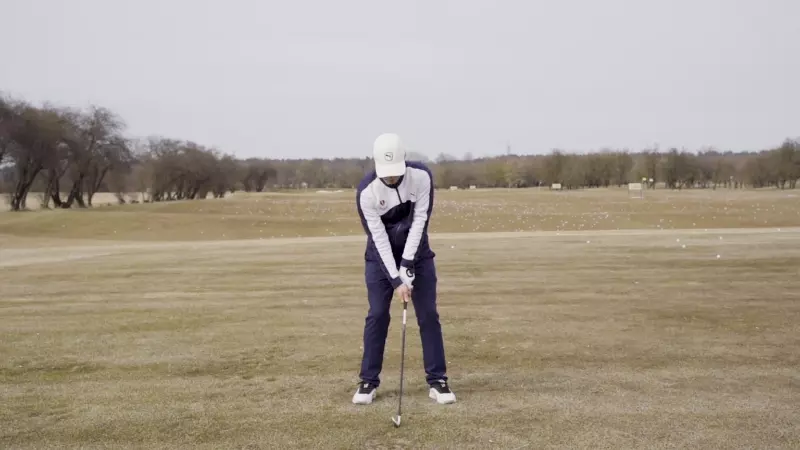
We’ve analyzed more than 1,000,000 golf swings and determined that there is a pattern every great golfer follows.
- From setup to the top of the backswing, no additional extension (or cupping) is added to the lead wrist.
- From the top of the backswing to impact extension is eliminated.
- At impact, the lead wrist is flat or in a flexed position.
From this impact position, shanking the ball is very difficult. Wearing the HackMotion can help you with your wrist extension problems, but so can this Motorcycle Drill, seen here.
3. Check Your Ball Position
Fixing a shank can be as simple as making sure your ball position is correct.
If you start shanking the irons out of nowhere, find the middle of your stance again. It doesn’t matter what iron you have in your hands; find the middle and start from here.
You may hit the ball a little thin or heavy, but the shank could go away.
Most times, golfers with the ball too far back in their stance can hit the shank because the clubface is still rotating towards closed as it approaches the ball.
4. Fix The Swing Path
If you come from the outside in, the chances of hitting a shank are higher.
The inside to out swing path will avoid the hosel making contact with the ball. To accomplish this in your game all you need is a headcover and a little time at the range.
Take a look at this video from Butch Harmon, giving you a great drill to fix the shank. What I love about this one is that it’s helpful from a visual perspective as well.
5. Get Rid of The Sway
The golf swing involves a lot of pivoting and turning, but swaying is a major cause for concern.
If you sway towards the target (instead of turning) on your way through the ball, your body will be open, the clubface open, and the club will be lagging behind.
There’s a chance you’ll make contact with the hosel.
My favorite drill to eliminate the sway is to put an alignment stick on the side of my lead hip. As I swing through the ball, I want to clear my hip around this stick instead of bumping into it and sliding through impact.
6. Don’t Let Weight Move to The Toes
It’s best to have your weight in the center of your feet when you are set up to hit a shot.
If you move that weight from the center of your feet to the toes at any point during the swing, you’ll increase your chance of hitting a shank.
Focus on weight staying centered, and hit 10 to 20 half swing shots where you never feel that dive towards the ball. Anytime you feel that diving action, you know that there is a chance you can strike the hosel.
Take some slow-motion swings and see if you feel yourself moving your weight forward towards the ball. Get it centered to make center contact.
7. Watch Out for The Low Inside Takeaway
The golf takeaway is such an important part of the swing because it can set you up on the right track for the rest of your swing.
Taking the club back low and slow is great, but low and inside can cause a shank.
Use a takeaway drill like the one seen in this video.
If you’ve been taking the club too far inside and too low on the backswing, you will realize it right away.
Additional Drills to Fix The Shank
Now that you have these shank fixes lined up, I thought it might be helpful to see a few additional drills.
Each of these could give you that feeling you need to get rid of the shank for good.
Box Drill
For this drill you can use a golf club box and just place it on the outside of the golf ball.
If you swing too much from the inside or the outside you will make contact with the box.
The drill will help you learn to finish the clubhead left.
Trailside Kick Drill
If you have issues with an overactive lower body (that moves in the wrong direction), the trailside kicks drill from Giles Gill could help.
For this one, you will need a range bucket and an alignment stick.
Swing It Left
With just a few alignment sticks set down on the driving range, you can learn how to swing the club left through impact.
With alignment sticks on the ground and this visual, you’ll have a much easier time eliminating the shank.
Final Thoughts
At this point, you should feel more confident about your ability to fix your shank. I know that this shot feels like the end of good golf, as you know it, but you can work through a fix.
Make sure your wrist angles are correct, watch your path, and keep that weight centered on your feet. These tips should lower the chance of a slice and get you on a path to success.





